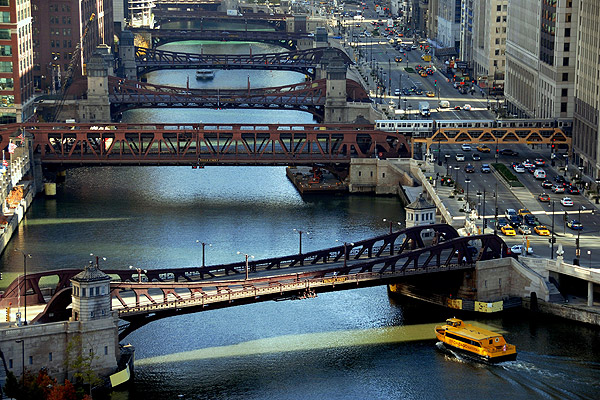
In our most recent issue, Chicago took to the waterways, with a new look at the Asian carp threat and a spectacular photo gallery of the turn-of-the-century Chicago River. Regarding the future river, Geoffrey Johnson sat down with architect Jeanne Gang for a lengthy Q&A about her new book, Reverse Effect: Renewing Chicago's Waterways (Johnson will lead a panel on the river featuring Gang on Wednesday, December 7 at the Notebaert Nature Museum). It lays out an ambitious plan to reverse the river and reclaim the water; the goal, for Gang, is that the river "could be brought into the city as a part of the urban fabric and connect the Bridgeport and Pilsen neighborhoods…. The whole book is looking at the barrier as a catalyst to reimagining [this part of the city]."
It's a long-held dream. Gang isn't the first urban-design expert to grace our pages on the subject of the Chicago River; planner Robert Cassidy wrote "Our Friendless River" in 1979, a piece that inspired the Friends of the Chicago River. Cassidy describes how badly our sewage polluted the river, and how overwhelming the engineering efforts to divert it—Deep Tunnel, at three billion and counting and on pace to finish over fifty years after it began—were. The end result looks a lot like what inspires Gang about the river's future:
Once the river’s quality is improved, its potential as a recreational and residential resource will increase dramatically. Its popularity could rival Lake Michigan’s. “The actual use of the lake is limited to people with big boats and lots of equipment,” says Walker Johnson, an architect with Holabird & Root and a lifelong sailor. But the river, he says, is “on an entirely different scale. There are a lot of people who have canoes and small boats who could use the river.”
Indeed, the river is a “blue-collar” waterway; it has long stood in the shadow of the Gold Coast image of the lakefront. Its gnarled fingers reach into the depths of the city’s working-class neighborhoods, places like Bridgeport, Ravenswood, Portage Park, and Pilsen, which have no direct access to the lake. Roughly ten percent of the city’s population lives within bicycling distance of the river.
What's the rush? It's the aforementioned carp threat, as Gang explains:
I’ve been involved with environmental issues in Chicago from the start of my practice. Actually, my thesis when I was at Harvard was about aerating and improving the Chicago River downtown. And I’ve been building up a pretty strong working knowledge of hydrology and green infrastructure potential. The idea to reverse the flow of the river and separate the watersheds has been floated out there, and there are a number of environmental groups that support it. One reason is because of the Asian carp. For this specific project, the NRDC—Natural Resources Defense Council—pointed out the location that they had in mind.
Re-reversing the river would be an expensive and time-consuming process, as Johnson found, because the bottom of the river would have to be cleaned of heavy metals and industrial waste. The third piece, besides Deep Tunnel and the to-be-determined carp solution, is losing "the unwelcome distinction of being the only big American city that fails to disinfect its sewage," which is due around the same time as the final part of Deep Tunnel.
Photograph: AntoniO BovinO (CC by 2.0)


